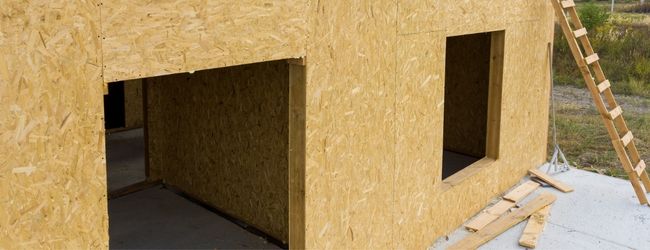
Sheathing is basically the “backing material” that can be found underneath the various layers of stucco that form the backing of residential and commercial buildings.
They can be made out of wood, cement, gypsum, fiberglass and other materials. Let’s take a deeper look at these different sheathing materials to get a better understanding of each of them.
Wood Sheathing:
This is the most common type of sheathing found on most residential applications these days and can come in two different forms:
OSB:
Short for (orientated strand board) is a man-made product that is constructed using adhesives and flakes of wood that are compressed in multiple layers.
This is an inexpensive product and is what most residential and commercial builds use, when wooden sheathing requirements are needed.
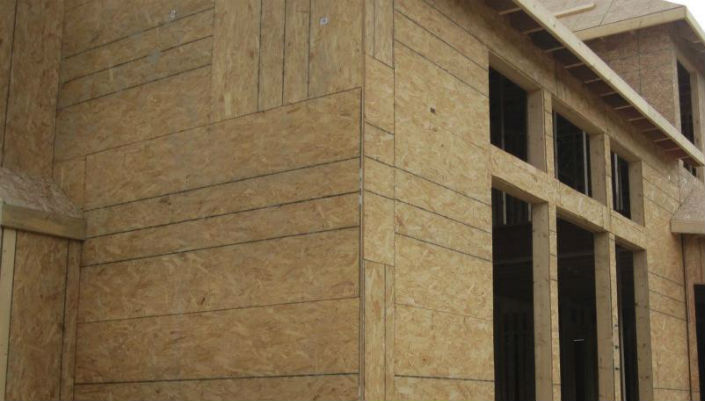
- Is usually around 3/8″-5/8″ thick for most stucco applications (unless noted by building plans, or county/state requirements)
- Can be found at most large home improvement stores and is readily available
- One of the cheapest sheathing options out there
- Comes in 4′ by 8′ sheets typically
- Additional links for OSB:
Plywood:
Is layers of thinner “veneer like” ply-woods that are glued together, alternating the grain of the wood that form a single solid sheet.
Ply wood is more expensive than OSB, but repels water a little bit better and provides a bit more strength too.
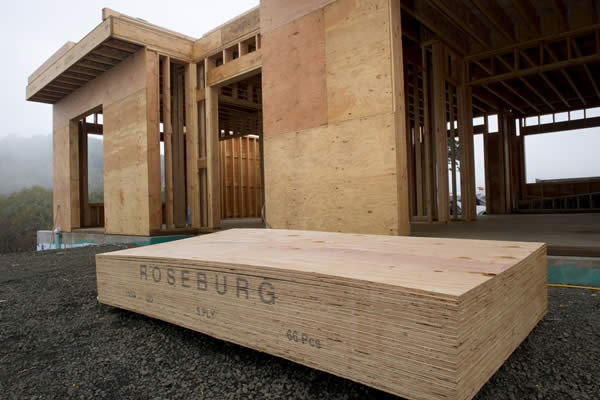
roseburg.com
- Is usually around 3/8″-5/8″ thick for most stucco applications (unless noted by building plans, or county/state requirements)
- Can be found at most large home improvement stores and is readily available
- Moderately priced, but still competitive
- Comes in 4′ by 8′ sheets typically
- Helpful links on plywood:
Additional Notes: When using wood substrates, you should space the sheets about 1/8″ to allow for expansion if the sheets happen to get wet.
If you do not, then the sheets could potentially buckle and create cracking issues in the base coat(s) and/or finish coat of the stucco.
If installing new wooden substrate, you can use 16d nails to create an 1/8 of an inch gap on all plywood/OSB sheathing. If already installed with no gaps included, a skillsaw or router can be used to create the gaps by cutting down where the sheets meet.
Only gap if the manufacturer requires it, if not, follow their directions for proper installation.
Exterior Gypsum Sheathing
This is basically an exterior grade drywall that is more commonly found in commercial projects, but can also be found in some residential applications as well. It has additive mixed into the base of it, which make it water-resistant and is coated with a water-resistant paper material as well.
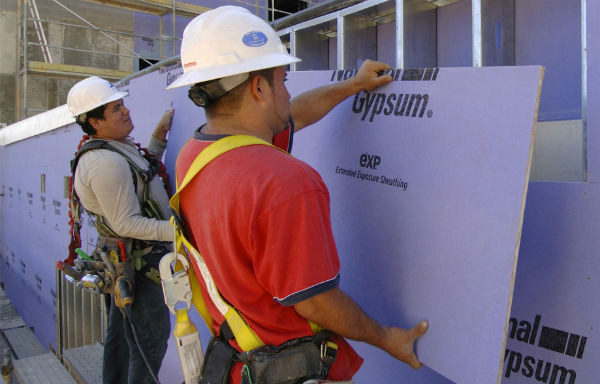
kuikenbrothers.com
Glass Mat Sheathing
Similar to exterior gypsum board, but uses a fiberglass barrier instead of a paper product on the outside.
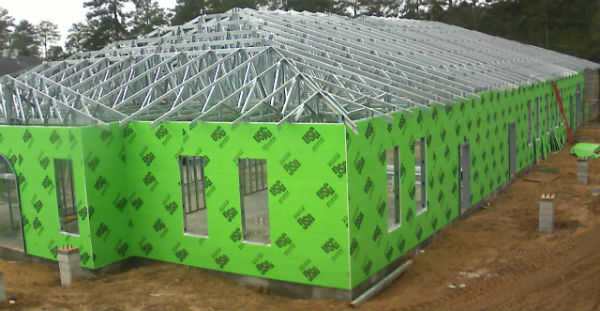
nelsonandaffiliates.com
- Similar sizes to exterior gypsum
- Is also a specialty item, but is usually found at most stucco supply yards or can be ordered
- Is a bit pricey
- More common in commercial applications
- Helpful Links:
- Coming Soon!
- Coming Soon!
- Manufacturers of glass mat sheathing and their websites:
Additional notes for gypsum and glass mat sheathing:
Cement Board
Cement board is basically a mixture of cement and reinforcing fibers (fiberglass strands) that is formed into a sheet that can be attached to a wall easily, providing a great base for tile or other masonry products.
- Is typically 1/4″ or 1/2 in thickness
- Comes in 4′ x 8′ OR 3′ x 5′ sheets
- Is available at most large home improvement stores
- Is very reasonably priced
- Helpful links on cement board:
- Manufacturers of cement board products and their websites:

